1. So They Don’t Drift Apart (Literally!)
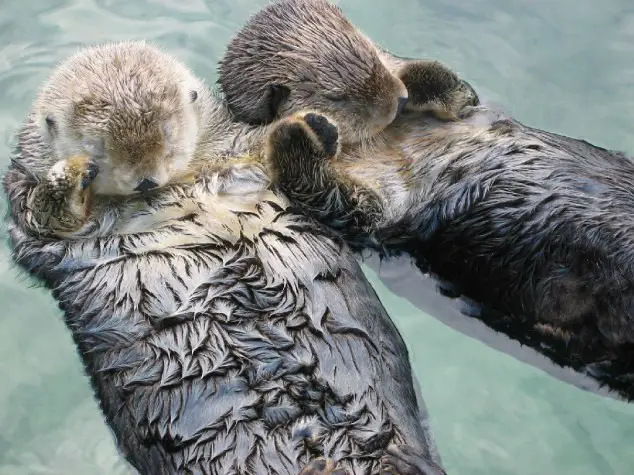
Sea otters live in coastal waters with strong currents that could carry them miles away while they’re fast asleep. To avoid waking up as the ocean’s loneliest drifters, otters hold hands, forming what scientists call “rafts.” These adorable floating groups can have anywhere from two to a hundred otters linked together, ensuring nobody ends up in another time zone. It’s like the otter version of using a buddy system on a class trip. Cute? Absolutely. Practical? Even more so. Otters prove that sometimes survival strategies can also double as heart-melting internet content.
2. Because Safety in Numbers Is Key
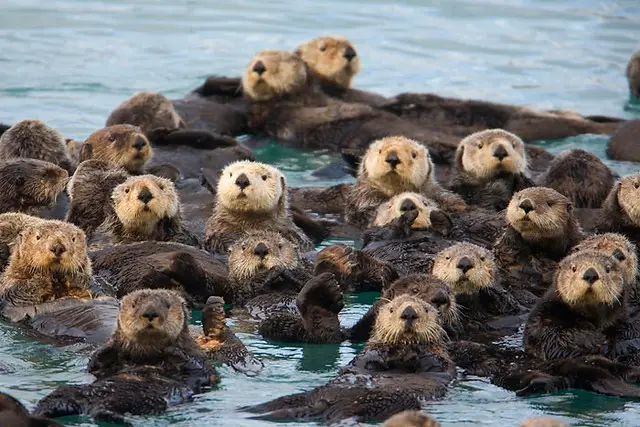
Predators like sharks and orcas see sea otters as a tasty snack, but otters have a strategy: they hold hands and stick together to form a united front. Large rafts of otters floating in harmony create a “strength in numbers” defense. A predator is much less likely to attack a tightly knit group than a lone otter. Plus, they look intimidating when packed together (okay, maybe not). This hand-holding habit isn’t just about bonding—it’s also about survival. Turns out, the key to ocean safety is forming an impenetrable wall of cuteness.
3. To Protect Their Favorite Snacks
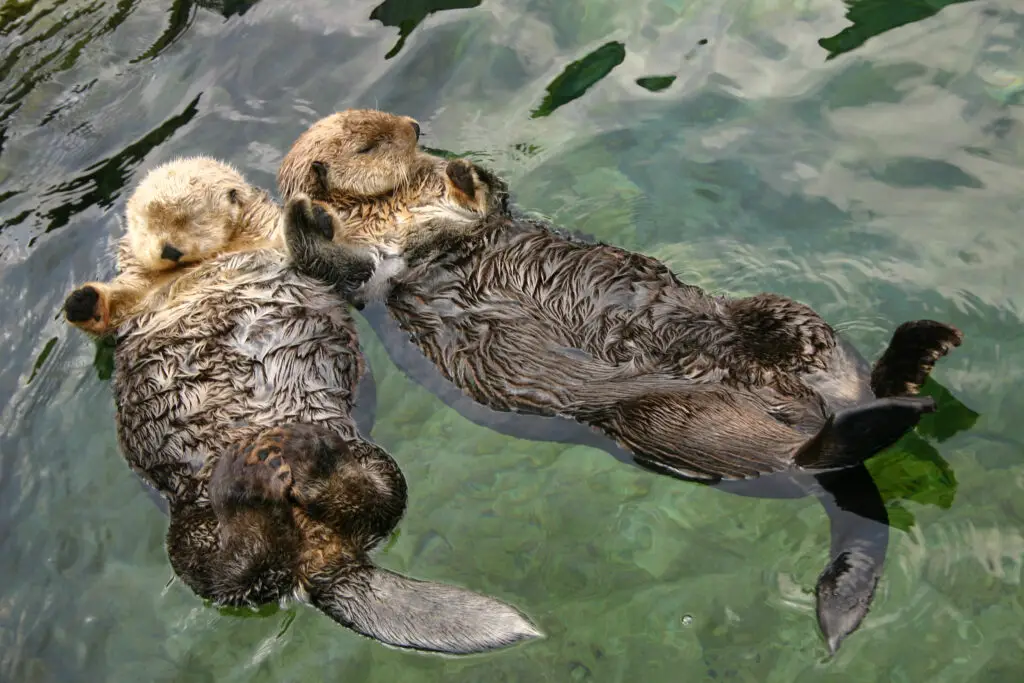
Otters are foodies to the core, and they don’t take any chances with their snacks. These little geniuses often hold hands while floating to keep their hard-earned clams and sea urchins nearby. Add some kelp wrapping, and you’ve got a built-in anchoring system that keeps both otters and their lunch from drifting away. Imagine working hard for a delicious meal, only for the ocean to steal it! By staying linked and stationary, otters keep their food safe while they nap. Hand-holding: adorable for us, but essential for otters’ snack security.
4. Because They’re Totally Codependent (And Proud of It)
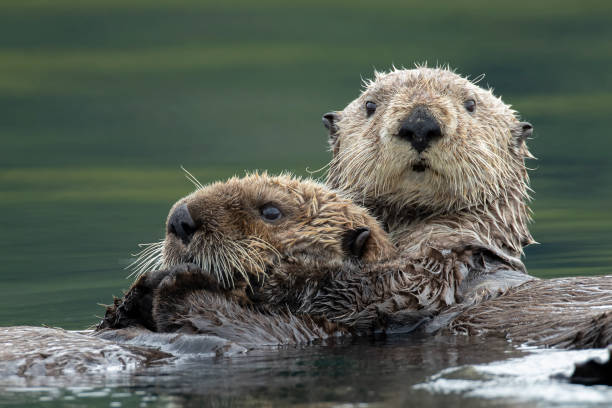
Sea otters are highly social creatures that thrive on connection, and holding hands strengthens their group bonds. It’s their way of saying, “I’ve got your back… or paw.” Scientists believe this behavior helps reduce stress and reinforce cohesion among their groups, making them more resilient to environmental challenges. It’s basically the otter version of a group hug that lasts all night. Their emotional intelligence shines through, proving that a little paw-holding can go a long way. It’s not just survival—it’s community-building at its fluffiest.
5. To Avoid Becoming Otter-ly Lost
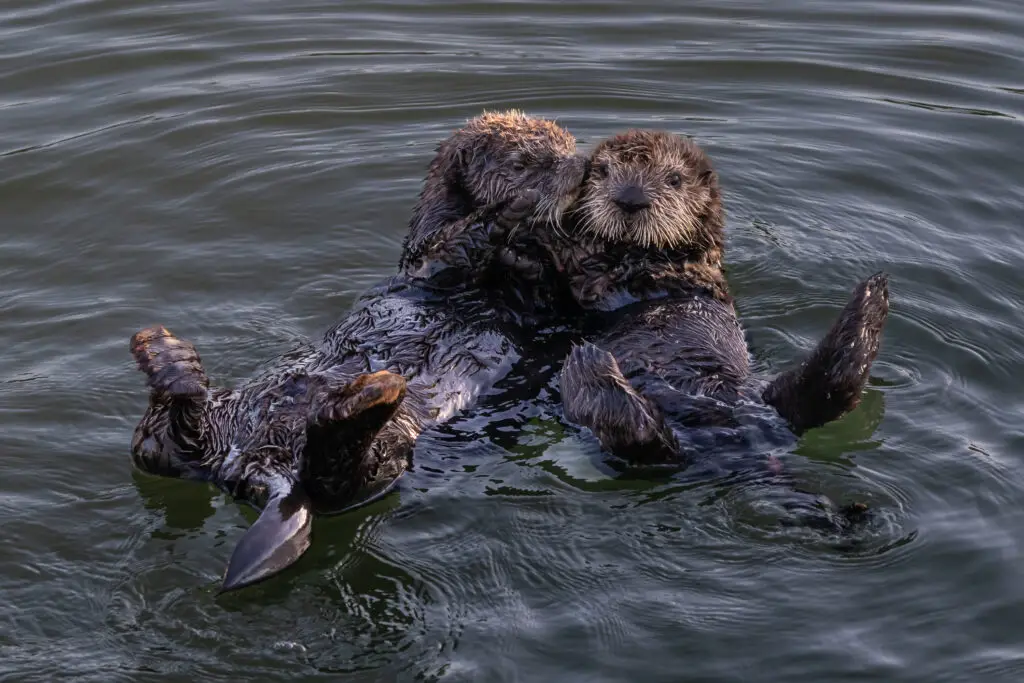
Life in the vast, unpredictable ocean can get confusing, even for otters. Hand-holding keeps them organized, like a floating landmark for their group. By sticking together, they make it easier to keep track of one another, even when waves or currents try to scatter them. This behavior is not just survival-oriented—it’s also efficient and collaborative. Plus, it minimizes the risk of one poor otter getting left behind in the big blue expanse. Who knew staying connected could be so cute and strategic? Otters truly have their priorities straight.
6. To Stay Anchored in Kelp Beds
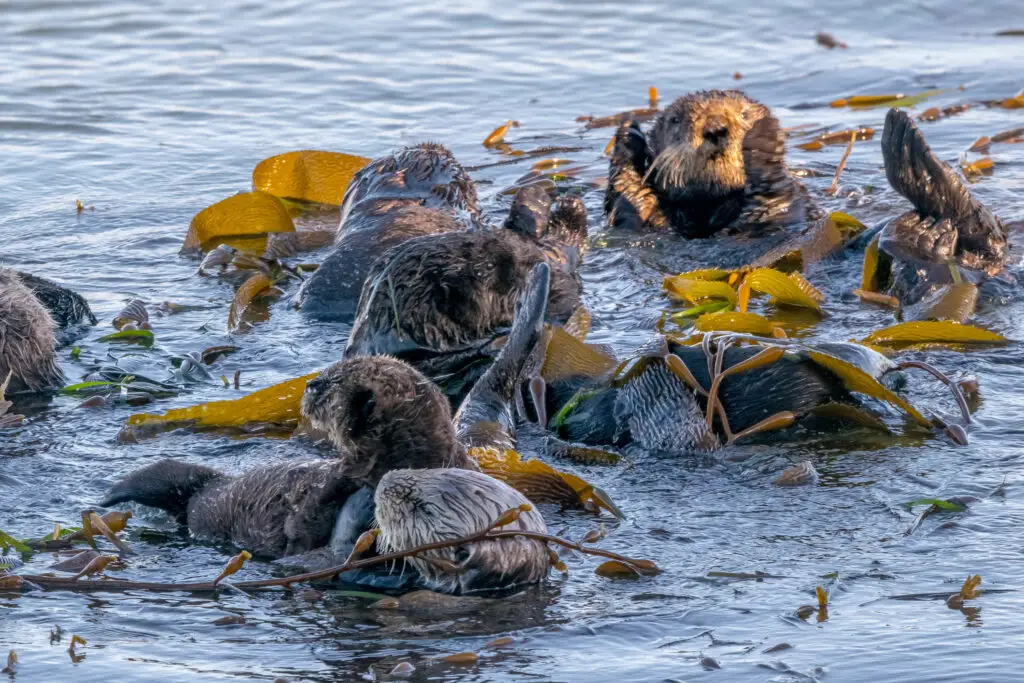
Sea otters are masters of improvisation when it comes to napping. In addition to holding hands, they often wrap themselves in kelp to keep from floating away. The kelp acts like an anchor, securing them in one spot even when the waves are rough. Hand-holding helps reinforce this natural tether, creating a network of otters bobbing peacefully in the water. It’s both adorable and ingenious—otters are basically nature’s hammock enthusiasts. While we need ropes and gear for comfort, otters manage to stay cozy and secure with just kelp and a buddy’s paw.
7. Because They’re Devoted Parents
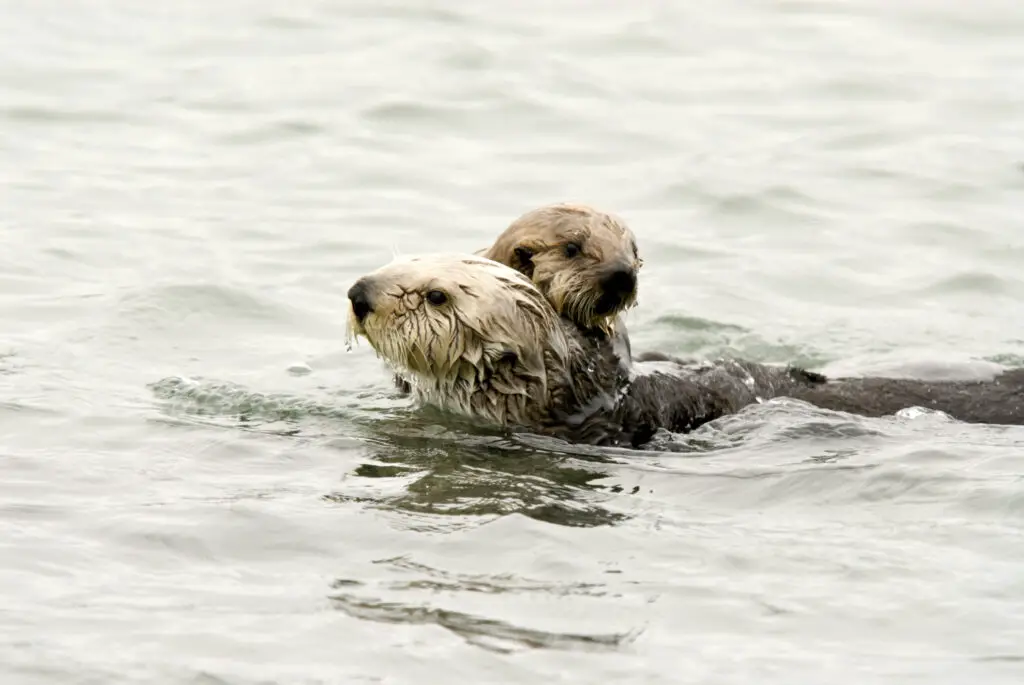
Mother sea otters are the ultimate multitaskers, often holding hands with their pups while keeping them afloat. Baby otters, known as pups, are born helpless and rely on their moms for everything, including staying safe in the water. Moms will even wrap their pups in kelp to create a makeshift “crib” while they hunt for food. Hand-holding ensures the little ones don’t drift off while mom is busy. It’s a perfect blend of love and practicality, showing that otter parenting comes with a strong grip—and a whole lot of cuteness
8. To Form the Ultimate Float Party
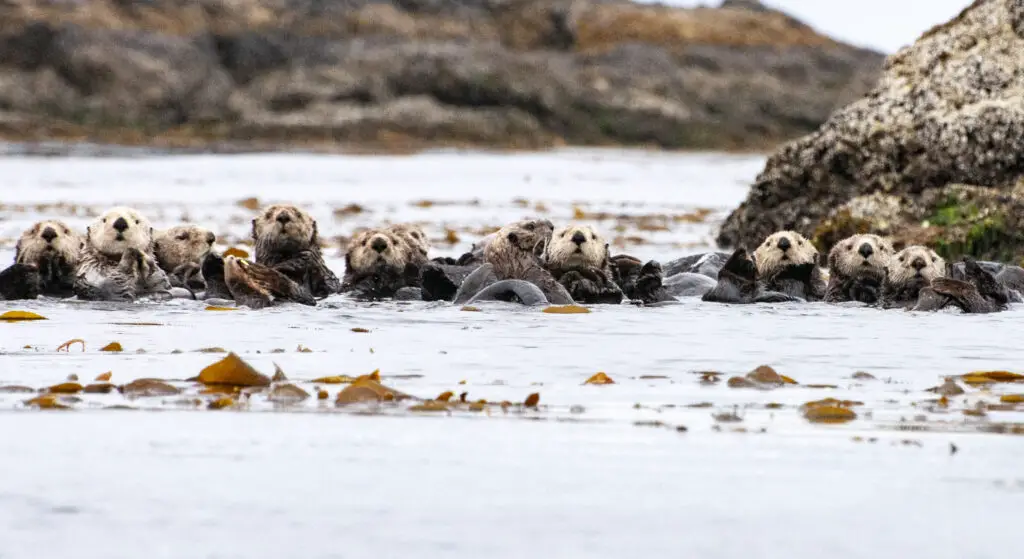
Sea otters are social animals, and holding hands isn’t just about safety—it’s also a way to hang out with their group. These floating cuddle puddles, called “rafts,” can consist of dozens of otters enjoying a group nap or simply relaxing together. Hand-holding keeps everyone connected, and it’s their way of sticking together while still catching up on much-needed rest. It’s like a slumber party on water, complete with a “no drifting” rule. Who needs human friends when you’ve got a raft of fuzzy otter pals to keep you company?
9. To Stay Warm in Chilly Waters
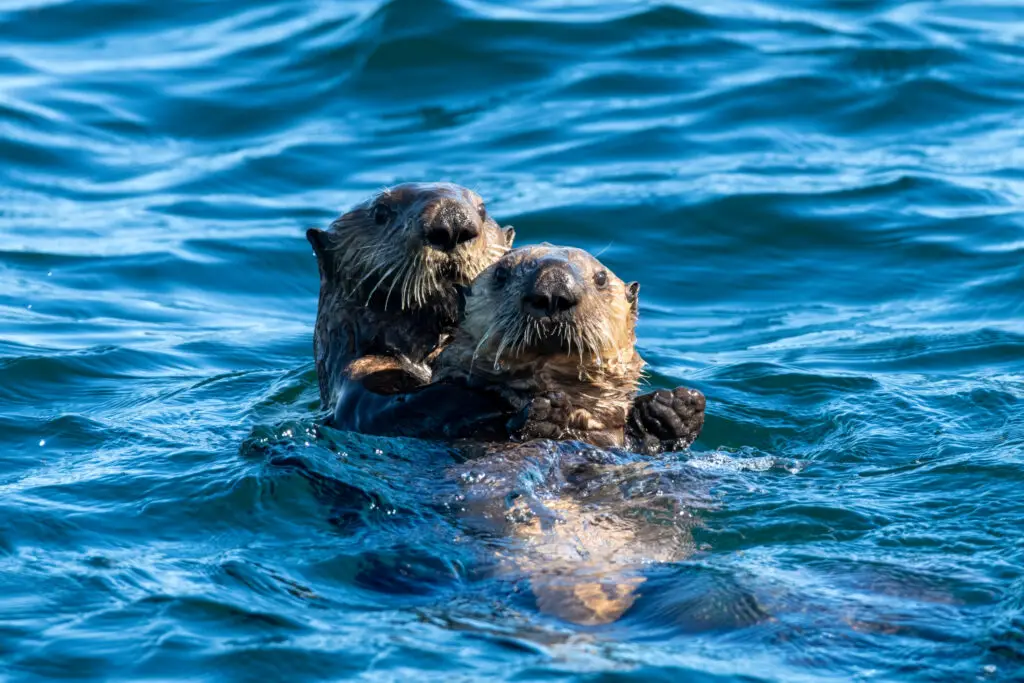
The ocean can be freezing, even for otters with their thick fur. Hand-holding is not just adorable—it helps them conserve heat by staying close to one another. Floating together in large rafts reduces exposure to cold water, creating a cozy bubble of warmth. This behavior is especially useful during colder months, when temperatures can drop significantly. So, while we pile on blankets to stay warm, sea otters simply link paws and let their group act like a big, furry radiator. Functional and heartwarming, quite literally.
10. To Maintain Buoyancy and Energy Efficiency
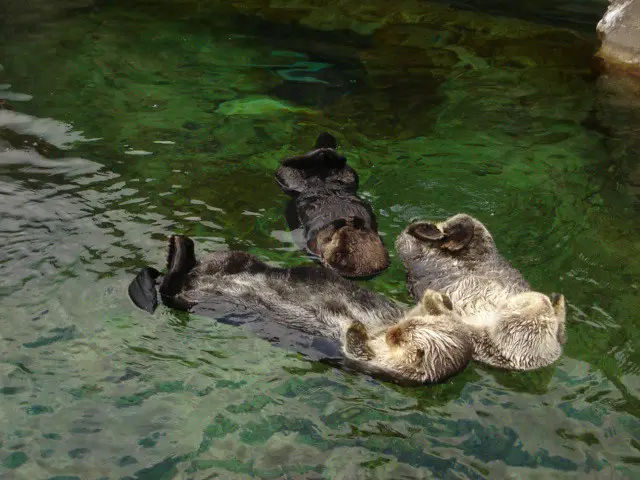
Floating in the ocean can be tiring, even for adept swimmers like sea otters. By holding hands and forming rafts, otters create a stable platform that reduces individual energy expenditure needed to stay afloat. This collective buoyancy allows them to rest more comfortably without constantly paddling to keep their heads above water. It’s akin to humans lounging on a pool float, sharing the load to conserve energy. In the vast, unpredictable ocean, this behavior ensures that otters can relax and recharge without the risk of drifting away or tiring themselves out.


